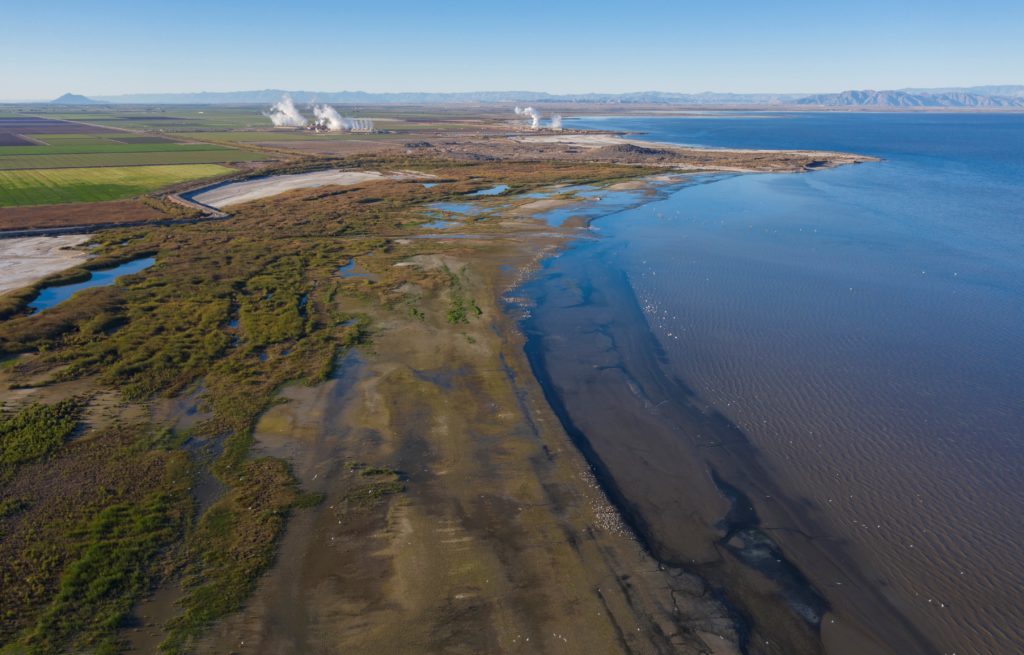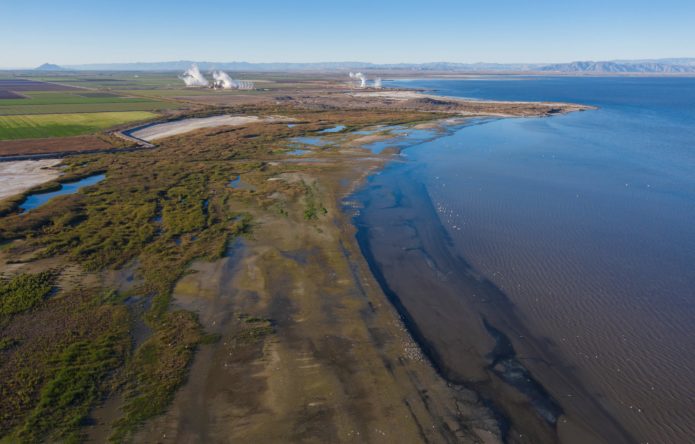
When the State Water Resources Control Board (State Board) last met to discuss the status of the Salton Sea Management Program (SSMP), Chairman E. Joaquin Esquivel called upon the State to resolve issues causing delays in the State’s lead project at the sea—Species Conservation Habitat (SCH). If you follow Salton Sea issues, then you undoubtedly know that the State did, in fact, reach resolution on several of these issues in May, meaning the State can move forward with a design-build plan for constructing SCH. In this regard, the hope is that the general public will see some movement toward restoration efforts at the sea. Development of the SCH project likely will not be enough to eliminate public concerns, but at least there will be a project moving forward that will be more than just a plan—it will be a tangible sign of the SSMP being implemented.
To date, there has been progress on smaller-scale restoration projects. The State, the Salton Sea Authority, and the Torres Martinez Desert Cahuilla Tribe completed a 60-acre wetlands project on the northern end of the sea. Additionally, work is advancing on the 500-plus acre Red Hill Marina wetlands project on the southeast side of the sea. Earthwork is complete; pipelines are in place; and pumps have been ordered and are on their way. Regardless, SCH is the shining piece of phase one of the State’s ten-year approach to the SSMP. It is a proof of concept project that would lay the groundwork for projects to come. The SCH project spans nearly 4,000 acres and entails building a series of ponds that would provide a controlled habitat to manage a fish population, which, in return, would provide a food source for migratory birds. Most importantly, it is a habitat project that would cover an expansive area of exposed playa.
What makes SCH so critical is that it has already gone through the permitting phase for the entire 4,000 acres and is ready to move forward with construction. Those who follow the Salton Sea issues anticipated SCH would already be moving forward by now in a phased approach that would have seen about 640 acres completed first. However, an easement issue, lack of staff dedicated to the SSMP, and a learning curve associated with a design-build project delivery process—led to delays in the project.
With land issues resolved, the fact the State is increasing its staff dedicated to the Salton Sea and the SSMP, and the State becoming more familiar with the design-build project delivery method, several obstacles impeding progress have been removed. The State anticipates beginning the process this year and to have the 4,000-acre project complete in 2023. There is still much that needs to occur, but there is reason to have hope that the restoration program will begin to build momentum and get back on track.
Stay tuned to the State Water Resources Control Board, which will likely be holding a new workshop on the Salton Sea in the near future. By then, the State is to have a recovery plan as a path forward to prevent future delays in project development. Though we all must remain engaged to ensure the State meets its legislatively-enacted responsibilities toward restoration, it does appear that a positive turn has occurred.
